When it comes to choosing a new furry companion, several factors come into play, including compatibility with allergies and the overall health of dog. Among the various dog breeds available, Pitbulls have gained both popularity and notoriety for their energetic nature, loyalty, and unique physical characteristics. However, for individuals with allergies, the question arises: Are Pitbulls hypoallergenic?
In this article, we will explore the question of whether Pitbulls can be considered hypoallergenic and discuss the importance of their overall health and well-being.
Are Pitbulls hypoallergenic?
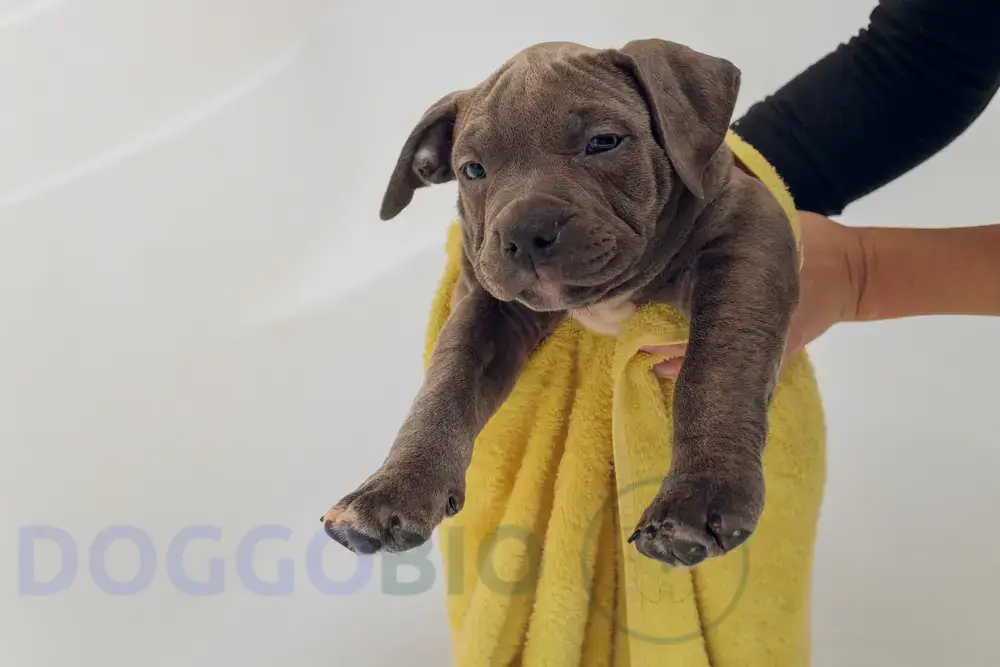
Pitbulls are unfortunately not hypoallergenic due to a few factors. Although they have a single coat and short hair, they still carry pesky allergens like dander on their skin, causing allergic reactions in some people.
In addition, Pitbulls tend to drool often, which can spread allergens throughout common areas in your home.
These dogs are also known for their affectionate nature and love being close to their human companions, including kissing. While that may be sweet, it can trigger allergic reactions in susceptible individuals.
But don’t worry! You don’t have to give up your furry friend or sacrifice your dream of owning a Pitbull. It’s worth noting that Pitbulls aren’t the most allergenic breed out there, and there are various ways to combat allergic reactions in dogs.
Information about Pitbull coats
Pitbulls have short-haired coats, meaning they don’t shed as much as double-coated dogs. Double-coated dogs have an additional undercoat layer which Pitbulls lack. But don’t get too excited! Despite being single-coated, Pitbulls are still heavy shedders. Yes, you read that right. They shed a lot all year round, with fall and spring being the peak seasons for shedding.
Understanding the meaning of hypoallergenic
Hypoallergenic, a term encapsulating innate attributes that diminish the probability of eliciting an allergic response, holds a distinct connotation in the world of dogs. Specifically, a canine bearing this classification is typically characterized as hairless or taking hair in place of fur, coupled with a propensity towards minimal drooling and licking, alongside expedited house training. However, this term is not unique to canines, as it constitutes a standard descriptor of many products and plant species we encounter in our quotidian lives.
Why can no dog be completely hypoallergenic?
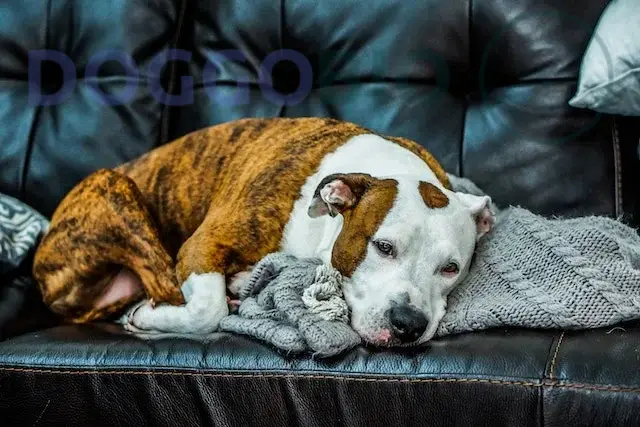
Dog breeds called hypoallergenic need specific physical and behavioral characteristics that reduce human exposure to allergens, such as fur, dander, saliva, and urine. While some breeds may have hair instead of skin or rarely drool, no species can be completely allergen-free, and no breed is 100% hypoallergenic.
The term “hypoallergenic” is often misused because nothing in the world is purely hypoallergenic, meaning it couldn’t cause an allergic reaction. Some people are even allergic to water, so it’s essential to understand that dogs, like any other living organism, can cause an allergic reaction to someone. Therefore, the “yes, hypoallergenic, won’t cause an allergic reaction” label is too broad and should be avoided.
What makes a dog allergic?
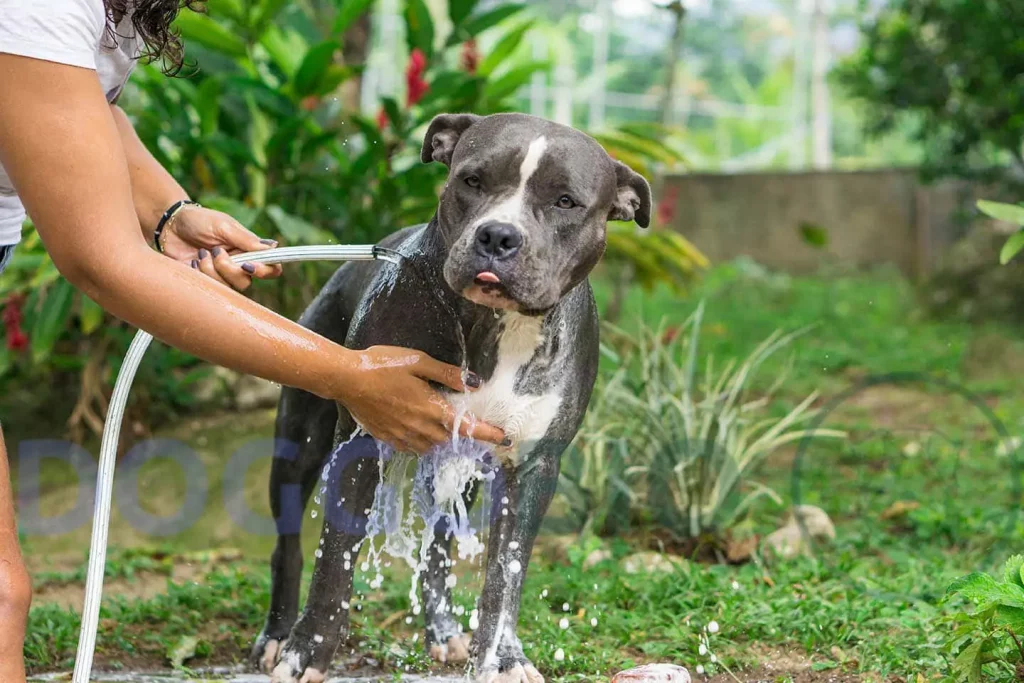
1. Shedding
Shedding can be a real pain in the tail for dog owners. Dogs, being the furry creatures that they are, have to shed their fur to regulate their body temperature, which means that there will be hair all over your house at some point. Some dogs shed all year, while others only shed during certain seasons.
If you live in a colder climate, consider a dog with an undercoat. An undercoat is a second layer of fur that helps to keep dogs warm. The undercoat is usually soft and fluffy, while the outer hair is stiffer. During seasonal undercoat shedding, dogs shed their warm winter coats to make way for more excellent spring and summer coats. This can be great for your dog but not so much for you. Shedding can cause extra irritants for allergy sufferers, so hypoallergenic dogs are often preferred.
2. Dander
When it comes to dog allergies, dander can be a big culprit. Dander, made up of tiny flakes of dead skin cells shed by your furry friend, can be carried on their fur and quickly spread throughout your home. This can cause various unpleasant symptoms for allergy sufferers, including sneezing, wheezing, and difficulty breathing.
Breeds that shed a lot, like Akitas, Alaskan Malamutes, Huskies, and German Shepherds, are more likely to spread dander. Conversely, dogs with non-shedding coats, such as Poodles and Bichon Frises, are often considered more hypoallergenic due to their reduced dander production. But remember, no dog is 100% hypoallergenic, and even dogs with non-shedding coats can still produce dander.
3. Allergen
The main culprit of your suffering is a pesky protein called an allergen in your dog’s saliva and urine. So, when your puppy gets too excited and slobbers all over your face or has a little mishap on the carpet, you might find yourself experiencing symptoms such as a runny nose, watery eyes, or even difficulty breathing.
It’s not just Pitbulls either – many breeds can produce allergens in their saliva and urine. So if you’re looking for a hypoallergenic pup, you’ll want to consider a species that doesn’t drool or have accidents very often.
Symptoms of an allergy to Pitbull
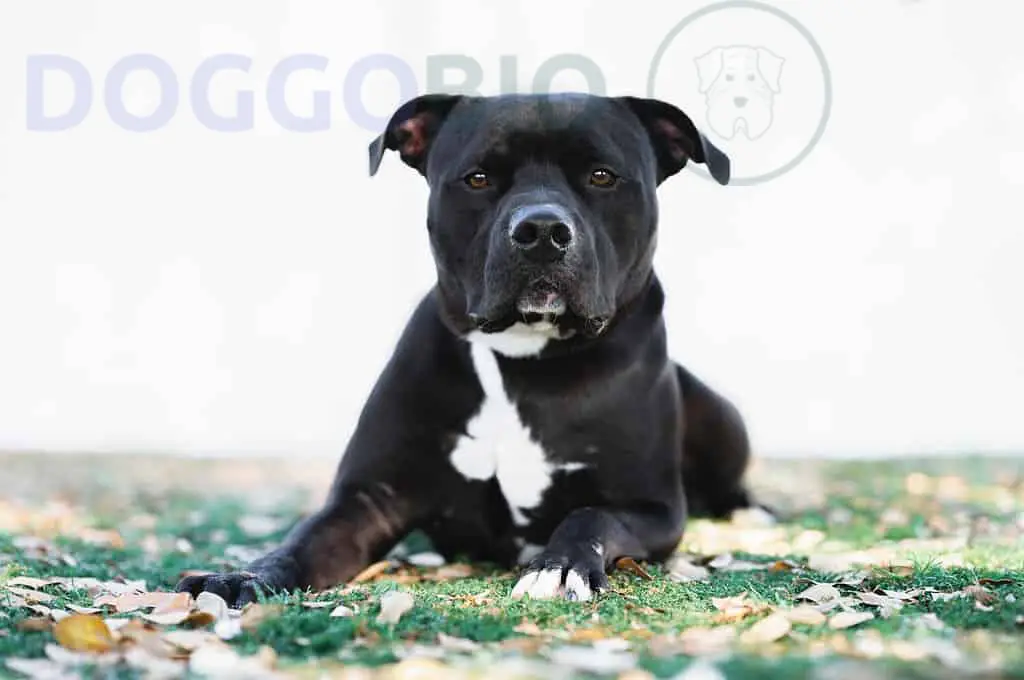
1. Asthma
Oh boy, allergies can lead to severe asthma complications regarding Pitbulls! Chest congestion, blockage of nasal passages, and difficulty breathing are just a few of the symptoms that could arise. And let’s not forget that these symptoms could be exacerbated if someone in your family already has asthma. But fear not! Some air purifiers may help alleviate some allergy symptoms if you still want to keep your furry friend around the house.
2. Skin Irritation
Regarding Pitbull allergies, skin conditions can be a significant complication. Allergies can lead to itching, redness, and inflammation on the skin, especially when you touch, hold, or hug your furry friend. This can be incredibly frustrating and uncomfortable for pet owners. If you notice hives, eczema, or non-stop itching on your skin after spending time with your Pitbull, you must see a physician to discuss treatment options.
3. Trouble sleeping
Sleep can be a real challenge when dealing with allergies as it causes swelling and inflammation in your nasal passage, leading to wheezing and breathing difficulties. People who suffer from allergies often find it hard to get a good night’s rest, frequently waking up due to congestion or the sound of their wheezing. The lack of quality sleep can result in fatigue, low energy levels, and psychological stress. It is essential to seek medical advice to address these issues and explore possible treatments to manage allergies.
Tips for minimizing allergic reactions to your dog
Looking for ways to keep your home as allergen-free as possible when living with your beloved Pit Bull? Here are ten top tips to help you minimize the allergens in your home and keep everyone feeling healthier:
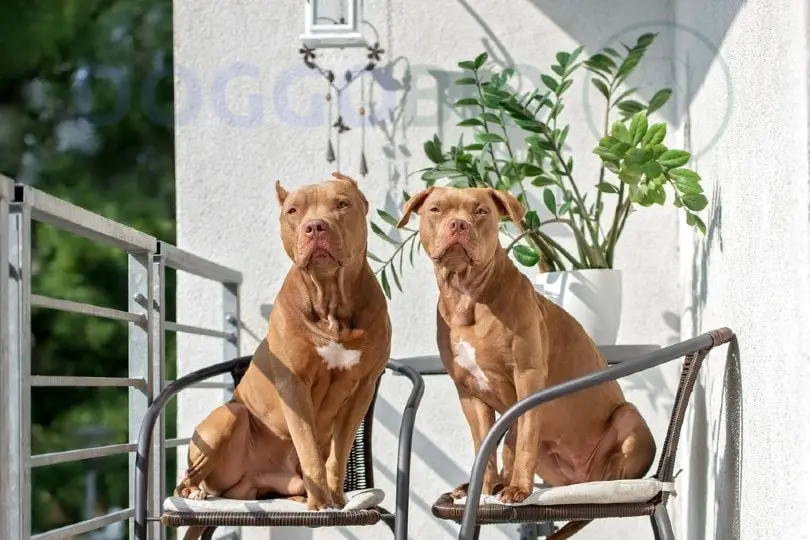
1. Keep up with grooming.
Pit Bulls don’t require constant maintenance, but frequent grooming is necessary if you’re experiencing allergies.
No need to spend big bucks on a groomer – you can groom your furry friend right at home! And the essential tool you’ll need is a brush. Brushing is vital in controlling shedding, keeping hair fallout in one place, and making it easy to remove irritants and allergens.
2. Bathing regularly
To get rid of those pesky allergens that seem everywhere, bathe your Pit Bull at least once a week. Even though these dogs can usually go longer between baths, weekly washes will help control the spread of allergens.
If your puppy has been outside for an extended period or playing hard at the park, consider giving them an extra bath to remove the excess sweat and irritants they might have picked up.
But be sure to use a gentle shampoo to avoid drying out their coat.
3. Don’t let your Pit Bull lick you
Pit Bulls are often unfairly labeled as aggressive canines. Nevertheless, Pit Bull parents can attest that they’re loving and affectionate pooches. They’re suckers for giving wet, slobbery smooches. However, resisting the urge to let your Pit Bull lick your face is crucial, as this practice exposes you to shared allergens in dog saliva.
Alternatively, you can show your Pit Bull some love by giving them additional toys and snacks, keeping them occupied and happy.
4. Wash your hands frequently
Petting your furry friend has a similar effect to brushing their coat – it can dislodge dead hair and dander, which can spread allergens. That’s where hand washing comes in. By washing your hands thoroughly after petting or grooming, you can transfer those pesky allergens to the trash can instead of carrying them around on your skin.
So go ahead and show your Pit Bull some love, but remember to suds up afterward!
5. Maintain a Clean Home
Keeping a clean home is crucial for minimizing allergens caused by your furry friend. Your Pit Bull will undoubtedly shed and transfer hair to lounging areas, beds, and couches. Therefore, it’s crucial to clean and vacuum your home regularly.
6. Trade in your carpeted floors for hard flooring.
While carpets may feel soft and cozy underfoot, their woven fibers trap dog dander deep within, making it almost impossible to remove altogether, even with the most powerful vacuum cleaners.
On the other hand, hard floors have nowhere for dander and stray hairs to hide, making them much easier to clean up. Plus, with hard floors, you’ll be able to spot the irritants more quickly and take care of them before they become a problem. So, whether moving to a new home or renovating your current space, consider ditching the carpets for a pet-friendly flooring option like hardwood, tile, or vinyl.
7. Set boundaries
Setting boundaries with your Pit Bull pup is a crucial strategy to minimize allergen exposure in your home. While it may be tempting to snuggle up with your furry friend in bed, sleeping in the same room as your pet can lead to prolonged exposure to allergens and annoying cold-like symptoms upon waking up.
So, if you are a pet allergy sufferer, keep your bedroom off-limits for your dog. Although you may face some initial resistance from your pet, creating boundaries is worth it in the long run. Your sinuses will thank you!
However, you can still keep all shared spaces with your pup. After all, Pit Bulls love being indoors and don’t like sleeping outside in extreme weather conditions.
Instead of sharing your bedroom, consider creating a cozy doggy nook in the living room. Slide into a dog bed next to your couch, where your furry friend can relax while you spend quality time with your family or catch up on your favorite TV shows. Not only will your dog be happy, but you’ll also have less to clean up!
8. Cleaning their toy
Pitbulls are known to be heavy droolers, and their saliva is a common allergen that can trigger allergic reactions. As a Pitbull owner, it is crucial to keep the house clean by wiping any wet surfaces and thoroughly cleaning their toys after playtime. Neglecting to clean up the drool can lead to the spread of allergens and can be especially dangerous for those with severe allergies. So, stay on top of cleaning duties to minimize the risk of allergic reactions.
9. Change your dog’s diet
To control the shedding and reduce the risks of allergies, it’s essential to ensure your Pitbull’s diet is well-balanced and nutritious. Some foods can improve the fur quality, while others can worsen the shedding. In addition, some Pitbulls may have food allergies that can cause excessive drooling and mucus production, exacerbating human allergies. Therefore, changing the dog’s diet can significantly reduce your home’s allergens risk.
10. Visit the vet
If you notice your Pitbull shedding fur like crazy, it’s time to visit the vet! Your furry friend might be dealing with some medical conditions that cause them to shed more than usual. It’s always better to rule out any underlying issues before taking action. So, schedule an appointment with your vet as soon as possible!
Some Posts You Wanna Read More
- Grey Pitbull
- Tri Pitbull
- Blue Nose Pitbull
- White Pitbul
- Are Pitbulls Good With Kids?
- Do Pitbulls Shed A Lot?
- How Long Are Pitbulls Pregnant For?
- How Long Do Pit Bulls Live?
- Is Pedigree Good for PitBulls?
Frequently Ask Question
1. Are there any hypoallergenic Pitbulls?
It’s important to note that there are no hypoallergenic Pitbulls, as they still produce allergens such as dander and drool. However, there are ways to reduce the likelihood of an allergic reaction.
2. Do Pitbull shed a lot?
Yes, Pitbulls do shed. They have a moderate shedding rate throughout the year, and their shedding peaks during the spring and fall seasons. However, Pitbulls aren’t considered heavy shedders compared to other dog breeds.
3. Are Blue Nose Pitbull hypoallergenic?
Blue Nose Pitbulls are not hypoallergenic. Veritably, Blue Nose Pitbulls are not a distinct breed of Pitbull and therefore have no exclusive features that would render them hypoallergenic.
Conclusion
In conclusion,the question “Are Pitbulls hypoallergenic? pit bulls are not considered hypoallergenic breeds. They produce allergens like all dogs, including dander, saliva, and urine, which can cause allergic reactions in some individuals. However, it’s worth noting that not all people with allergies react to the same allergens, and some may have fewer or no allergic reactions to pit bulls compared to other breeds.
Ultimately, if you have allergies and are considering getting a pitbull, it’s crucial to spend time with the breed and test for any reactions before making a final decision. It’s also essential to remember that proper grooming and cleaning can help minimize allergens in your home and keep your pitbull healthy and happy.
